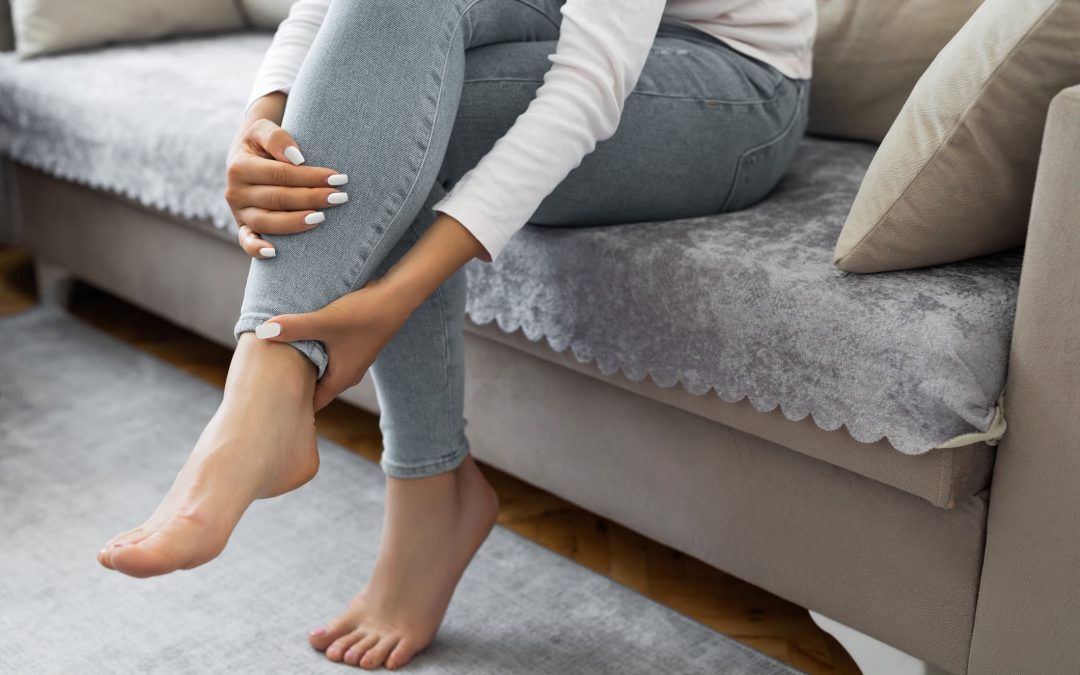Living with Heel Pain
Sometimes heel pain doesn’t go away, and you may need to address it. When patients chat about their chronic heel pain, it is typically plantar fasciitis. The plantar fasciitis is located on the bottom of the foot, and when it becomes inflamed, it may result in pain when walking or simply resting.
Heel spurs can be caused by strains on foot muscles and ligaments, stretching of the plantar fascia, and repeated tearing of the membrane that covers the heel bone. Athletes who engage in activities that involve extensive running and jumping are particularly prone to developing heel spurs, as well as people who may be carrying excess body fat, wear poor footwear without arch support, or walk with a stride that places too much pressure on the heel bone.
Pain management for heel spurs can look like many things, but for those who have just encountered this issue, where do you start?
Read on to learn about five different options to try when healing your heel spur pain.
- At-Home Remedies
Home remedies are also great options to work on your pain management for heel spurs. Many people struggling with heel spur symptoms have found that utilizing ice and elevation aided in their recovery, and limited the amount of pain they experienced.
Try icing your heels for 10 minutes, on and off, to reduce inflammation and constrict the blood vessels to reduce pain receptors. This helps to aid the injury, along with rest and elevating the foot. Many patients have found at-home success using frozen water bottles to roll underneath the feet, or ice packs to alternate on and off to soothe the feet.
Getting plenty of rest and elevation to alleviate pain, provides your feet with a break from the stress placed on your heel. Take breaks during the day if you find yourself on your feet often due to work or responsibilities to allow your feet to rest and alleviate pain.
- Physical Therapy
For patients looking for a way to heal heel spurs, many have found recovery with physical therapy techniques. Practicing a few of these therapeutic stretches may help improve your overall pain level when it comes to heel spurs.
At Smith Medical we recommend consulting a healthcare professional to help determine what motions to avoid and which ones will help relieve heel spur pain.
- Foot flex.
- Wall calf stretches.
- Lower impact exercises that removed pressure from the feet such as cycling instead of running.
- Seated plantar fascia stretch.
- Resistant ankle inversion stretches with or without a band.
A professional physical therapist will point you in the right direction to implement the right physical therapy routine to improve your heel spur pain.
- Heel Spurs Medication
Patients looking for the fastest way to heal a heel spur might consider trying over-the-counter medication as an option for instant relief. Although medications will not immediately heal the issue in the foot, they can provide relief for pain. Especially for those who are waiting on a local podiatrist appointment, or if they are in the process of finding the right foot doctor, accessible medication is always a good option.
Anti-inflammatory medications such as aspirin, ibuprofen, and naproxen can aid in your pain management for treatment. Over-the-counter pain medication may be an appropriate alleviate heel spur pain at home. These medications are non-steroid options that can be purchased at local stores without having to receive a doctor’s prescription.
5. Consider Plantar Fasciitis Surgery
For patients who ask, “What is the cause of heel spur pain?”, it might be different from patient to patient. It could be due to injury strenuous activity or pressure on the heel bone. But for patients who have worked with more conservative treatment options and have not found relief, plantar fasciitis surgery may be the right option.
During this procedure, the surgeon will make an incision near the affected area to release the bone growth on the heel. Any damaged tissue contributing to chronic pain is carefully removed, including excess bone. The surgery is performed using local anesthesia where the patient undergoing surgery will be awake but won’t feel pain from the surgery site.
After removing the heel spur pains find themselves in a recovery period, but report overall pain relief and recovery from struggling with chronic heel spur pain.
Heel Spur Removal with Smith Medical
At Smith Medical, we understand the complexities of healthcare. Today, many procedures and treatments are unattainable due to their lofty price. At Smith Medical’s mission is to provide our patients with the accessible, transparent, and quality care they deserve, especially when it comes to heel pain, heel spurs, or any type of plantar fasciitis complication.
Contact the team at Smith Medical to learn more today.
Schedule an appointment with one of our board-certified foot and ankle doctors now.

